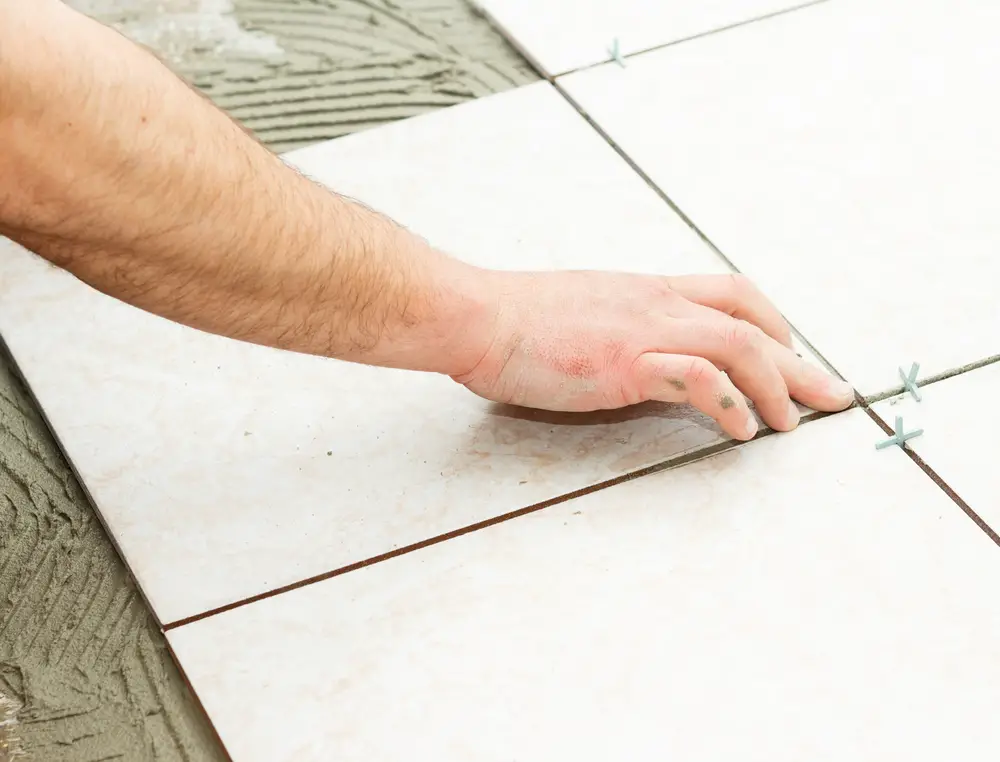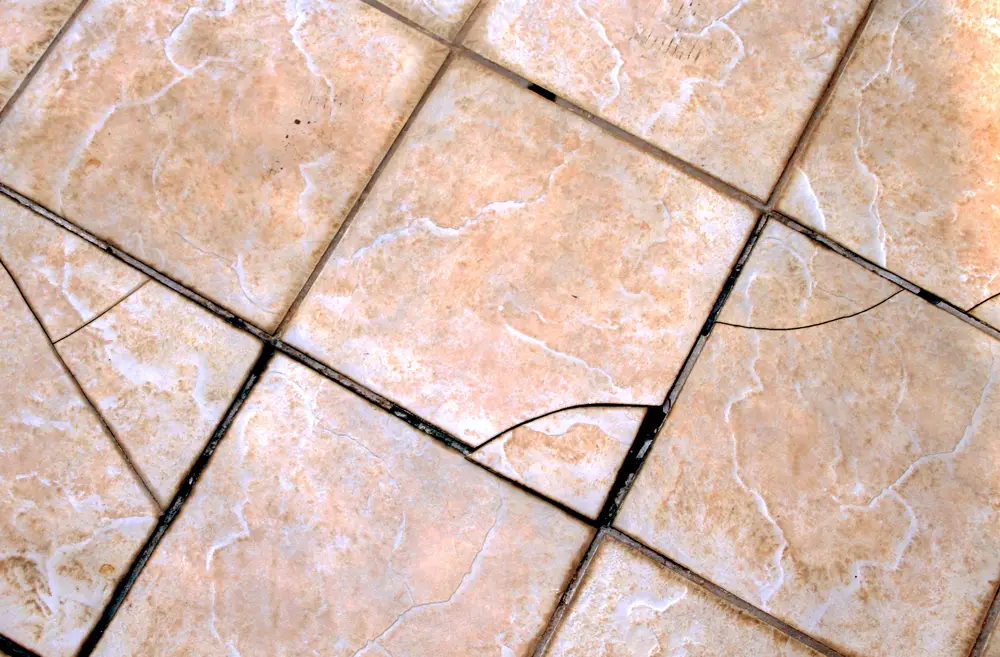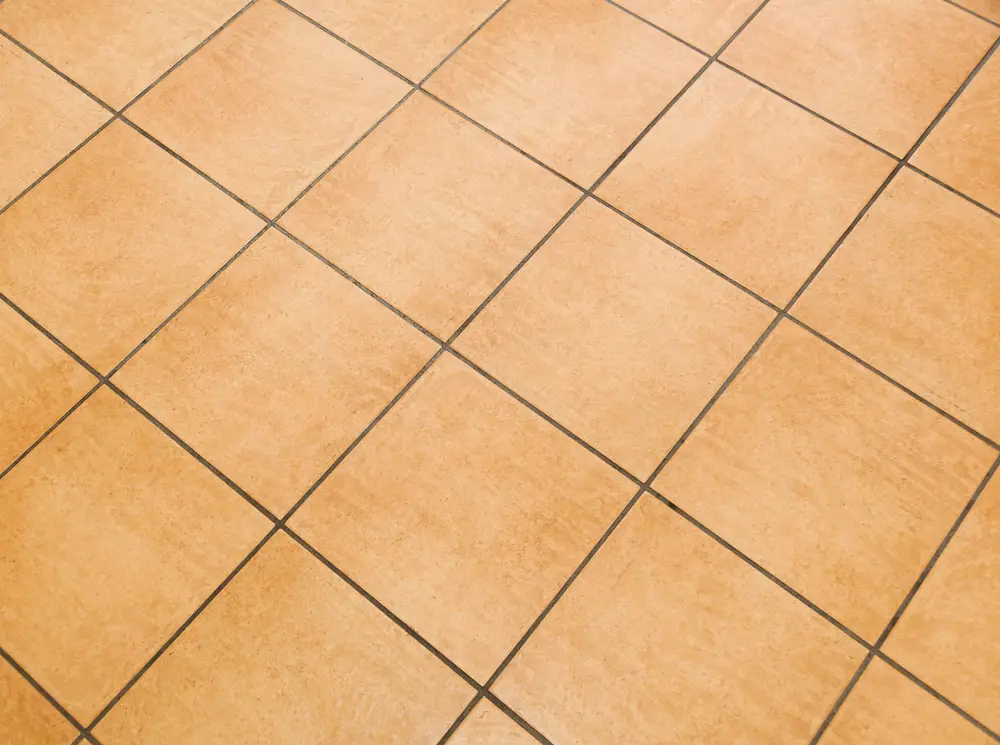Tiles come in many shapes, sizes, and materials, meaning that it is important to know which tiles are suitable for underfloor heating before installing them. Certain tile materials will be liable to cracking under the frequent heating and cooling that occurs with underfloor heating.
Tiles can crack with underfloor heating, cracks are usually caused by movement of the screed at a preexisting crack or by an ‘opening’ in the screed. This can be attributed to a poorly designed screed or an improperly installed heating system before the tiles were laid.
This article examines whether underfloor heating causes cracks in tiled flooring.

Does Underfloor Heating Work With Tiles?
Underfloor heating works with tiles well, and in fact, they makes for a great combination due to the excellent thermal conductivity of most tiles.
It is common for tiles to conduct heat well, allowing heat to easily enter the room through them and warm it up quickly. Additionally, tile is excellent at retaining heat, so it helps your underfloor heating system run more efficiently.
Aside from that, tiling over underfloor heating also bring the following benefits:
- It can be installed on any floor level.
- It’s aesthetically pleasing.
- Floor tiles are highly durable, long-lasting, and easy to maintain.

7 Reasons Why Tiles Crack With Underfloor Heating
Underfloor heating does not directly cause cracking of tiles, but poor and bad installation practices can. One of the difficulties that underfloor heating installers face is getting a good foundation for the tiles to be laid on. Any imperfections in the subfloor will be reflected on the final surface.
In a worst-case scenario, the floor would experience instability and even movement. When open joints or cracks form in the screed itself, it can cause movements that are enough to cause a crack in any type of tiles. You can expect tiles to expand at a different rate to screed and adhesive, which might stress the tile-adhesive bond.
It’s important not to tile over an underfloor heating system too soon because it can weaken the grout and adhesive. This is because the adhesive needs time to cure before you can begin laying tiles. If the heating system is turned on too soon, the adhesive dries up too quickly, weakening it.

Other factors can cause tiles to break. These include:
1. Turning on the UFH too soon
It takes time for an adhesive to cure. Turning on your underfloor heating too soon can cause the glue to dry before it’s had time to attach the tile securely. This can make tiles more likely to come loose, or worse, crack.
2. Incorrect installation
Installing tiles correctly is very important. Otherwise, you may end up with many different problems, including cracked tiles. Common mistakes include but are not limited to:
- Improper adhesive application: To ensure the durability of tiles, you should ensure that they fully adhere to their surface. The adhesive should cover a 1 cm margin on both the edge and back of the tile. Larger gaps can weaken your tiles and cause them to crack.
- Unsuitable adhesion: Tiles need to be secured to a surface using a flexible adhesive so that no matter how much the floor moves, the tiles will stay stable. Using improper materials like grouts can damage tiles and can even cause them to crack! Applying a flexible membrane will help protect both the tiles and neighboring surfaces.
3. Cracked substrate
If the subfloor below the tiles is broken, it’s also possible for one or more cracks to form on top of them. Cracks and gaps will worsen over time as the material expands and contracts. Gaps will also form where a membrane or screed has not been present to stretch as the substrate moves.
4. Tiling over control joints
Sometimes tiling over large areas of concrete floors can be difficult. Without some kind of flexible membrane, you might see fractures in the tiling near joints for materials to expand and contract. So make sure you don’t cover up the joints with tiles!
5. Low-quality tiles
Claims that low-quality tiles break more easily than high-quality tiles are not new. In fact, research has shown that low-quality tiles are more likely to break given the same weight load and temperature conditions. Low-quality tile manufacturers use cheaper materials and less durable glazes to lower their costs and often don’t follow any industry standards.
6. Hard impacts
Porcelain and ceramic tiles both withstand shock, but they are more likely to break when subject to such hard impact. This is especially true if other installation issues exist.
7. Heavy stationary load
You might not realize it, but tiles can actually break when heavy appliances or furniture are placed above them. When installing tile flooring, be sure to choose something that can withstand heavy use. Check if it follows the American Society for Testing and Materials (ASTM) C648-20 standard when choosing tiles. Otherwise, you might be left with holes and cracks after a few years of wear and tear.
Can You Replace Cracked Tiles?
Although cracked tiles can usually be replaced without a problem, the case is not the same when you have underfloor heating installed beneath. In this scenario, by digging up the tiles, you risk damaging your underfloor heating system. You’ll need to strip the old ones and replace the heating.
I recommend asking a professional to assess your flooring situation in this instance.
In some cases, you’ll have to be careful of the pipes, wires or other materials beneath. I would recommend calling in a professional underfloor heating company for advice when you have cracked tiles overlying underfloor heating that need replacing.
In the end, the type of tiles you choose matters. So you should think about choosing quality tiles in the first place!

Which Type of Tiles Works Best With Underfloor Heating?
There are many factors to consider when choosing the best tiles for underfloor heating, including the desired level of warmth, energy efficiency, and aesthetic appeal.
Porcelain and ceramic tiles are often seen as the best tiles for underfloor heating. They’re thermally conductive of all floor coverings and allow the energy from the UFH to transfer quickly and effectively.
During installation, it’s recommended to use decoupling membranes and flexible adhesive to reduce any chance of hairline cracks from forming due to expansion and contraction.
Porcelain vs. Ceramic Tiles for Underfloor Heating
| Descriptors | Ceramic Tiles | Porcelain Tiles |
| Made from | Red, brown, or white unrefined clay | White refined clay |
| Thickness | Thicker than porcelain | Thin, between 8mm and 12mm |
| Hardness | Softer | Harder |
| Moisture Absorption | More absorbent | Less absorbent |
| Cost | Less expensive | More expensive |
| Advantage | • Excellent thermal conductor • Ideal for underfloor heating • Easier to cut for DIY projects | • Ideal heat conductors for underfloor heating • Natural insulators, hold heat well • More heat-resistant and hard-wearing |
| Disadvantages | Less durable than porcelain | • Too hard to cut without the help of experts • Not for DIY projects |

How To Prevent Tile Cracks
While you cannot easily fix a broken tile, there’s something you can do to prevent it.
- Make sure the maximum temperature is set to 35°C. Do not turn on the UFH system immediately after installing new tiles.
- Let the adhesive cure for at least 7 days before turning on the UFH.
- Once you start it up increase the temperature gradually over time to avoid your tiles breaking. This will help you create a perfect tiled floor, with an even temperature, without having to worry about any cracks at all.
Tiling Over Underfloor Heating Tips
Are you a DIY kind of person, or do you just want to ensure the installation of your tiled floor and underfloor heating system is going to plan? Here are tips to note when the installation is ongoing to prevent cracking of your tiles in the nearest future.
The tips for tiling over underfloor heating include:
- Tiles will contain the entire heating element within the adhesive and aid in dissipation from the cable to the floor and the entire room.
- Tiles installed by the “dot and dab” method should not be used with electric underfloor heating since the air voids may cause the heating cable to overheat and fail.
- Check whether tiles overlying underfloor heating will raise the level of your floor.
- In most cases, a tiler will be happy to tile directly over an underfloor heating system. Some tilers would prefer to apply a thin bed of self-leveling compound over the underfloor heating element before tiling to protect the cable against any damage. This is best if the site is a busy one or if the underfloor heating will be left exposed for any extended length of time.
- Any tile adhesive or self-leveling compound should be suitable for use and should be flexible.
- It is advisable that after tiling, you put on the underfloor heater after seven days and then gradually increase the temperature by a few degrees till you reach operating temperature. This is to ensure that the adhesive is properly set before heat is applied.

Are Heated Tile Floors Worth It?
Underfloor tiles are more than just a cozy way to warm your feet and your home; they offer several advantages that include:
- Energy Efficient Heating: Underfloor heating is energy-efficient. Unlike radiators, it does not overheat. Instead, it achieves the desired temperature set by you using the on-the-wall thermostat. Unlike the conventional radiator, which tends to overheat or make the room too chilly at times.
- It is effortless to run. Meaning that once installed, it needs no absolute maintenance. It is a one-time installment. I mean, imagine the relief and peace of mind installing an underfloor heating benanth your lovely tiled floors.
- With installing underfloor heating, you get to enjoy more space and freedom to design your wall as you deem it fit. Even the most modern radiators take up space on a wall, so with an underfloor heating system, you can design your wall to your taste with no obstruction, leaving you to your creativity and design style.
- It works well with all types of floor covering. Whether you want to laminate your wall and floor or cover your floor with stones, tiles, wood, carpet, or any other thing, Underfloor heating gives you the freedom to design as you wish.
- With an underfloor heating system, you get safety and comfort, especially if you have children in your home, you won’t have to worry about them running into the heating system or getting hurt or the heating system getting too hot to touch because an underfloor heating system puts them completely out of harm’s way. Also, an underfloor heating system produces fresh and oxygen-rich air, unlike the radiator that tends to mix air with dust from the ceiling.

Lots more Underfloor Heating Information Here
- What Depth is Required for Underfloor Heating?
- Turning on Underfloor Heating for the First Time – How Long to Wait?
- Can you lay Vinyl flooring over underfloor heating?
- Do Tiles Crack With Underfloor Heating?
- Can You Heat a Whole House With Underfloor Heating?
- Can You Have Underfloor Heating Upstairs?
- Will Underfloor Heating Raise My Floor? – Underfloor Heating Layers Explained
- Can I put furniture on top of underfloor heating?
- How Do I Know If My Underfloor Heating is Leaking?
- Can You Combine Underfloor Heating With a Ground Source Heat Pump?
- Is Underfloor Heating Safe?
- Does Underfloor Heating Add Value to a Property?
- Can you have Wooden Floors with Underfloor Heating?
- Can Underfloor Heating Cause a Fire?
- What temperature should Underfloor Heating be set at?
- Can I Put a Rug Over Underfloor Heating?
- How Long Does it Take for Underfloor Heating to Warm Up?
- Why is my Underfloor Heating Noisy?
- Why is my Underfloor Heating Patchy?
- How do I know if My Underfloor Heating is Working? – Common Problems & Fixes
- What can go wrong with underfloor heating?
- Can you Combine Underfloor Heating with an Air Source Heat Pump?
- Do you keep underfloor heating on all the time?
- Does Underfloor Heating work with Smart Thermostats?
- Kitchen Underfloor Heating – Should Underfloor Heating go Under Kitchen Units?
- How much energy does Underfloor Heating use?
- Underfloor Heating in Summer and Winter
- Lifespan of Underfloor Heating
